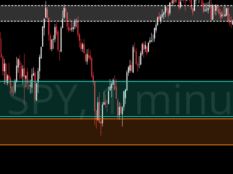Options Trading Explained
I’m Meta Matt, Director of Education and welcome to PB University LITE! This is a 50 Class Trading 101 Series geared towards both new and veteran traders alike! We go over everything from Trading Psychology, Technical Analysis, and Options Trading to Commodity Trading, Forex, and more!! This 50 Class series is not designed be taken in order, it is instead designed for traders to browse and pick which classes interest them. I will include the list of classes at the bottom of this page.
Start Trading With Webull: Free Stock Shares
Custom Trading Indicator DISCOUNT: Try StocksBuddy Today
Get A Trading Coach, Premium Alerts, Education, and Community:
1 Month Membership
90 Days (Save 10% Per Month)
1 Year (Save $279)
Options trading involves buying or selling options contracts. Options contracts give the buyer the right, but not the obligation, to BUY or SELL (and when it’s buying it’s called a CALL, and selling its called a PUT), an underlying asset (such as a stock) at a predetermined price (which is called the strike price) by a certain date (which is called the expiration date). The cost of these contracts is determined by the premium.
So for example let’s pretend it’s January 1st, and you are buying a CALL for Ticker $XYZ with a Strike Price of $30, expiration date of February 3rd, at a premium of $.50… That means that you are buying a contract that gives you the right to buy Stock $XYZ for $30 by February 3rd and it will cost you $.50 per share. Now here’s the thing, an options contract is (typically) for 100 shares of the stock. So, each CALL contract actually gives you the right to buy 100 shares of a stock at a specific time, by a specific date. Exchanges show option premiums in terms of the price per share, not the total price you must pay to own the contract. So basically, the premium shows you how much it would cost to buy the contract if the contract represented 1 share, but it represents 100 shares. So, in this example, since the premium is $.50, that means the options contract costs $.50 per share, and since an options contract represents 100 shares, that means in order to buy that Contract you need to pay $.50 100 times ($.50 * 100), so $50. That’s how much the Options CALL Contract Costs you, $50.

So, for $50 you now own an options CALL contract that gives you the right, not the obligation, to buy 100 shares of stock $XYZ at $30 per share by February 3rd. So, let's say that today is January 1st. And I bought that contract today and the current stock price of $XYZ is $30. And let’s say by February 3rd the Stock price goes up to $40. Well, I can choose to exercise the contract. What this means is buying 100 shares of Stock $XYZ at $30 per share, like my CALL option gives me the right to. Even though the stock price is $40 now, my options contract lets me buy those 100 shares for $30 per share instead of $40. I can turn around and sell all 100 of those shares for a $10 profit per share, so $1,000 profit minus the $50 premium it cost me to buy the contract in the first place.
However, let's say instead, that between January 1st when I bought the contract and February 3rd the stock price went DOWN from $30 to $20.
Well now that contract is worthless, because you’re not going to want to exercise it and buy 100 shares of stock $XYZ at $30 per share, when it is currently trading at $20 per share and you can just buy it at $20. So you lose your whole premium, so in this example $50.
Now with PUTS you are buying the right, not the obligation, to SELL a stock by a certain date at a certain price. So for example, let’s once again say it’s January 1st, and now I am buying a PUT for stock $XYZ with a strike price of $30, expiration date of February 3rd, and premium of $.50. That would give me the right to Sell 100 shares of stock $XYZ by February 3rd at $30 per share, and it would cost me $50. With a PUT I want the stock to go down, so in this example let's say the current stock price when I bought the PUT is $30. Now if the stock goes down from $30 to $20 by February 3rd. When I exercise the contract, I am selling 100 shares of the stock at $30, even though the stock is only $20. When my put option is exercised, I am buying 100 shares of the stock at the current price of $20, and then immediately reselling those 100 shares to the option writer, who is obligated to purchase the stock at the strike price of $30. So that would be $10 profit per share, so $1,000 minus the $50 it cost for me to purchase the contract.
But if instead, I bought that same contract, and instead of going down to $20 the stock went up above my $30 Strike Price, to say $40. Then in order
to sell 100 shares of the stock at $30, I would first have to buy 100 of them at $40 per share first. Which would be an immediate loss of $10 per share, or $1,000. So instead, I would just let the contract expire worthless, and just be out what I paid for it, which was $50.
But remember, the options contract gives you the right, but not the obligation to exercise it. There are ways to make money before the expiration date without exercising the contract. You do this by trading the premium. In order to understand that we need to dive into The Greeks. Make sure to tune into Class #12 of PBU LITE where we talk about how Trading Options Premiums work and The Greeks!!

PB University LITE Class List
1) Trading Terminology
2) Stock Market Indices
3) Common, Preferred, and Penny Stocks
4) Diversification of Assets
5) Fundamental Analysis Made Easy
6) Technical Analysis Made Easy
7) Risk Management In The Market
8) Portfolio Management
9) How To Follow Market News
10) Trading Psychology
11) Options Explained
12) The Greeks In Options Trading
13) How To Short Sell Options
14) Covered CALLS
15) Spread Trading
16) Online Brokers for Options Trading
17) Implied Volatility Calculators & Tools
18) Protective PUTS
19) Iron Condors
20) Straddles
21) Reading Level 2
22) Taxes
23) Trading Psychology Techniques
24) The Art Of Trading
25) Becoming A Jedi In The Stock Market
26) Futures Trading Explained
27) Commodity Trading 101
28) Regulatory Environments
29) How To Become A Millionaire
30) $100K In 100 Days
31) Wash Sale Rule
32) Behavioral Finance Part 1
33) Behavioral Finance Part 2
34) 5 Charting Indicators
35) Fair Value Gap
36) Insider Trading and Market Manipulation
37) Stock Chart Types
38) Moving Averages 101
39) Base vs Precious Metals
40) Electricity Trading 101
41) Trading Brokers 101
42) 5 Trading Strategies
43) 85% Trading Rule
44) Are Win Rates A Scam?
45) Futures Trading 101
46) ATR Indicator Strategy With The Greeks
47) MACD Indicator 101
48) Bollinger Bands Indicator 101
49) Wedges, Triangles, Flags and Pennants
50) RSI Divergence 101



